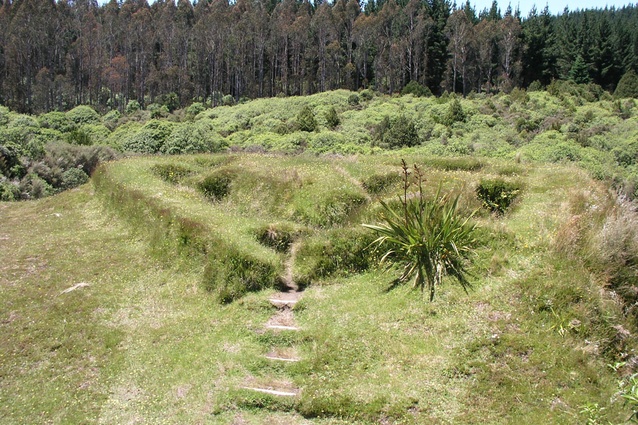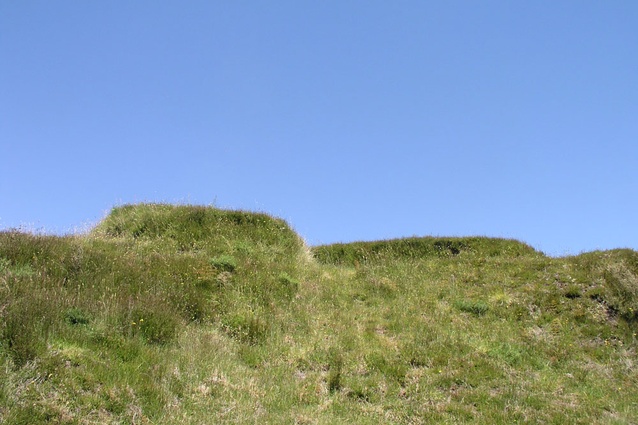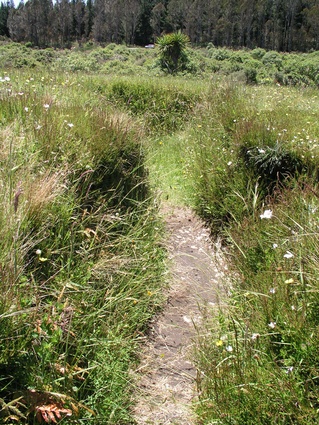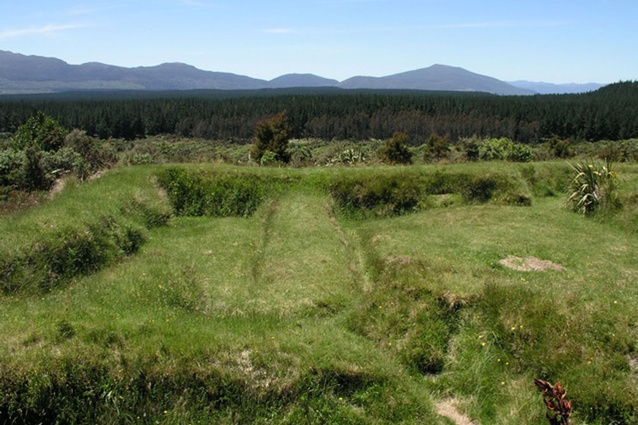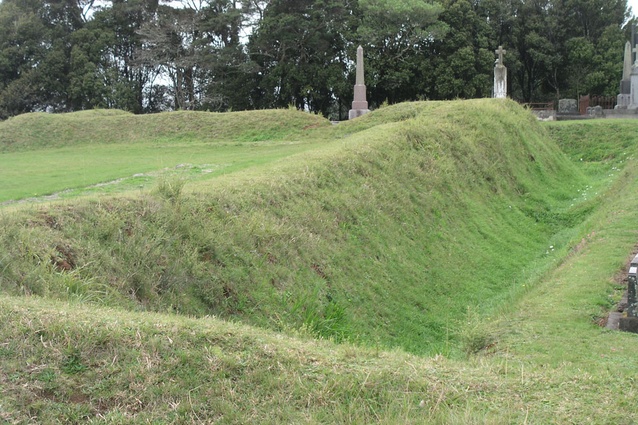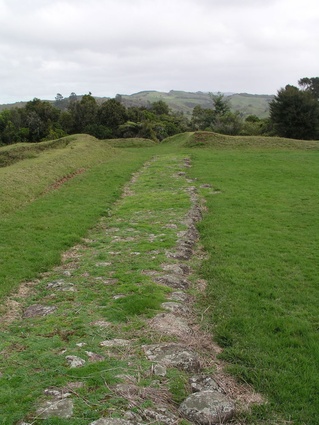Etchings from the past
Philip Smith looks at some of the marks on the land left by historic New Zealand wars.
War is undoubtedly an ugly affair. It is therefore ironic that some of the marks that it leaves upon the land should evolve into things of beauty. In recent years, this has been recognised by landscape architects, who have begun to adapt the ‘language’ of our historical battle sites and defensive settlements into forms that speak of our history.
The use of earthworks within landscape architecture and art is by no means new. Environmental artists of the 1960s formed primal artworks by sculpting the land into geometric forms. Even earlier, the Swiss landscape architect, Ernst Cramer, created a remarkable installation, the Garten des Poeten (Poet’s Garden) in 1959, in which mounds were shaped into a dynamic association of geometric forms, that was evocative of Suprematist compositions.
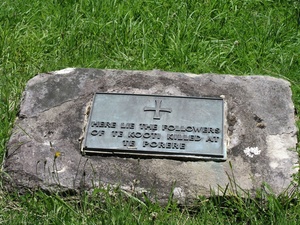
New Zealand’s pre-European earthworks are particularly fascinating for the direct relationship that they communicate between people and land. Whilst undeniably artificial, they are heavily constrained by topography, and are therefore particular to wherever they occur, which often resulted in intriguing, aberrant forms. This stands in stark contrast to the arrogant imposition of the orthogonal grid upon the land – an approach that was commonly applied by colonial powers.
In this article, we show images of two examples of military earthworks; one Maori (Te Porere), the other a product of the British military (Alexandra Redoubt, Tuakau). (There are two major redoubts in the upper North Island called Alexandra Redoubt. One is at Pirongia in the Waikato, whilst the subject of this article is found at Tuakau, on the boundary of Auckland and the Waikato.) Te Porere is a famous battle-site in the central North Island, where Te Kooti contested his last major confrontation with the Crown. As this battle was fought well after muskets became a standard feature of New Zealand warfare, the redoubt is a hybrid of sorts.
For obvious reasons, muskets necessitated greater concealment for defenders than did battles conducted with traditional Maori weaponry. One method of achieving this provides Te Porere with its most distinctive aesthetic element – the claw-like entry to the lower redoubt, which lends it the appearance of a sleeping crab perched upon the hill. This forces the assailant to wind through a restricted space, beyond which a defender could fire upon him from behind the relative safety of several wiggling returns, that also contribute to the redoubt’s remarkable form.
In contrast with the organic, somewhat improvised form of the lower redoubt at Te Porere, the Alexandra Redoubt employed the geometry of the Empire in its plan layout. However, it also demonstrates how British forces learned from Maori, particularly in the dramatic combination of deep fosse (ditch) and high rampart that forms the impressive perimeter to the redoubt.
The monumental character of this type of sharp contouring has been used to powerful effect in several high-profile landscape projects (notably in the work of Isthmus Group). Much more work could still be done to explore this further, particularly through detailed study of the varied parts of such sites, and the observation of unusual forms like Te Porere.
There is another dimension to these historical places that is not apparent from a distance. The preservation of such sites allows interesting assemblages of native plants to endure (or to recolonise them). In the case of Te Porere, the sculpted forms of the lower redoubt play host to mountain daisies (Celmisia gracilenta), karetu (Hierochloe redolens, otherwise known as holy grass) and Blechnum novae-zelandiae, amongst many other native species. Although reasonably botanically impoverished, the banks of the Alexandra Redoubt are home to large numbers of native bees – an ecological benefit that results from the lack of disturbance that this previously contested site now enjoys.

